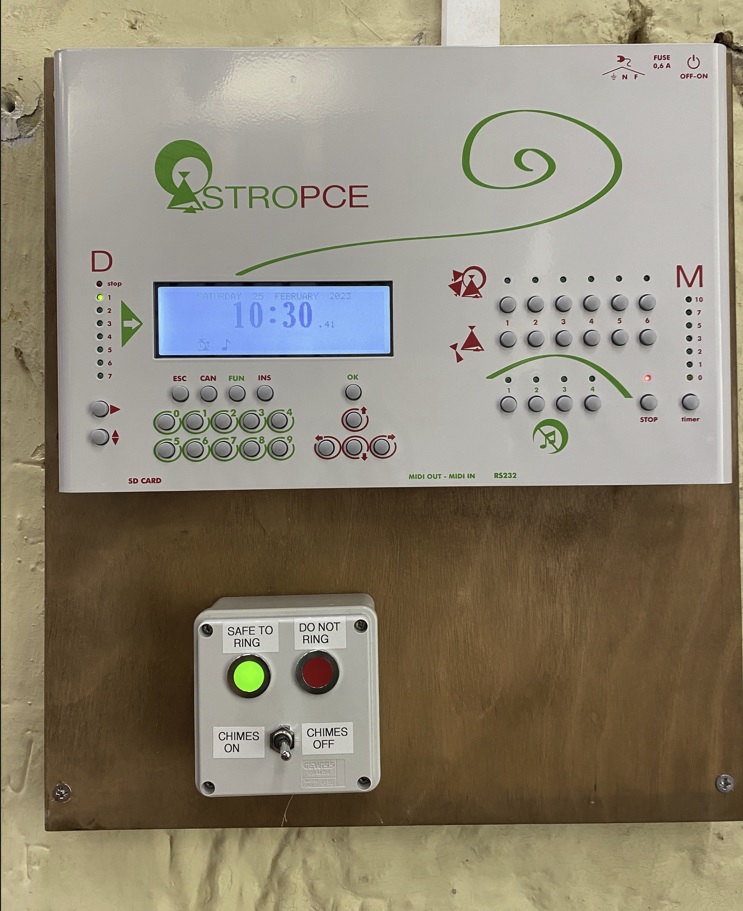
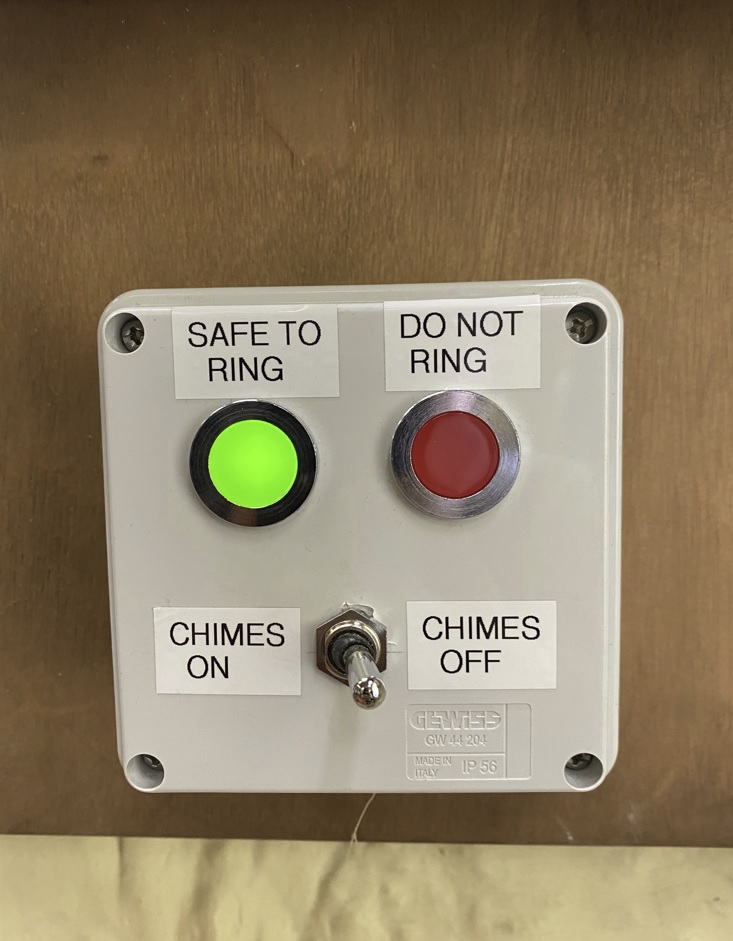
The Diocese of Southwark granted a faculty for work on the new carillon chiming device and a new electronic version was installed by Nicholsons Engineering Ltd/Bell Hangers in February 2023.
There will be a special dedication service Sunday 23 April for the new chiming device and to celebrate the 50th Anniversary of our 12 bells.
In this blog post, we track the progress, what the current situation was before the work took place, the work which was carried out and the hymns we have programmed in.

The history
The carillon in Kingston Parish Church dates from 1923 and has given solid service for the last 98 years.
Here is a brief history of the carillon (source Chris Ridley).
- In February 1923 Gillett’s supplied an estimate for a new carillon machine to replace an existing carillon thought to be about 200 years old which played two tunes only (Hanover and the Easter Hymn). The new machine was to play 4 tunes (Hanover, Easter Hymn, St Davids and London New) with a new barrel of cast iron and case hardened with steel pins. Work was completed in October 1923.
- In the 1930s it was agreed between the Corporation and Church that the ownership of the clock should be vested in the Corporation, while the driving rods, dials and hands as well as the striking mechanism should remain the responsibility of the Church. The carillon is similarly dealt with – the machine is the property of the Corporation while the activating levers, wires and hammer mechanisms on the bell frame are owned by the Church.
- The carillon appears to be liked by members of the congregation and is part of the atmosphere around the church and market.
- The carillon plays the tunes at certain times of the day, nominally 9.00am, 12.00noon, 3.00pm and 6.00pm for 3-4 minutes and is independent from the hour strike.
- The carillon comprises the following components:
o A large cast iron drum C3ft in diameter and 1.5 metres wide with iron pegs resembling a music box, powered by an electric motor with a
leather drive belt.
o The iron pegs lift levers, which via a system of intricate steel wires
and linkages, operate hammers which strike the bells.
o There are four hymn tunes appropriate to events in the church
calendar, see below.
o The tunes are changed by turning a worm drive on the drum to move
the drum to engage with different pegs.
o The carillon is activated from the electrically driven clock by an old
mercury switch which is potentially unsafe.
o Before the bells can be rung full circle for normal practice and service ringing, the hammers have to be lifted away from the bells by a ‘pull off’ mechanism comprising four wires going from a ‘trailer winch’ in the ringing chamber up to the carillon.
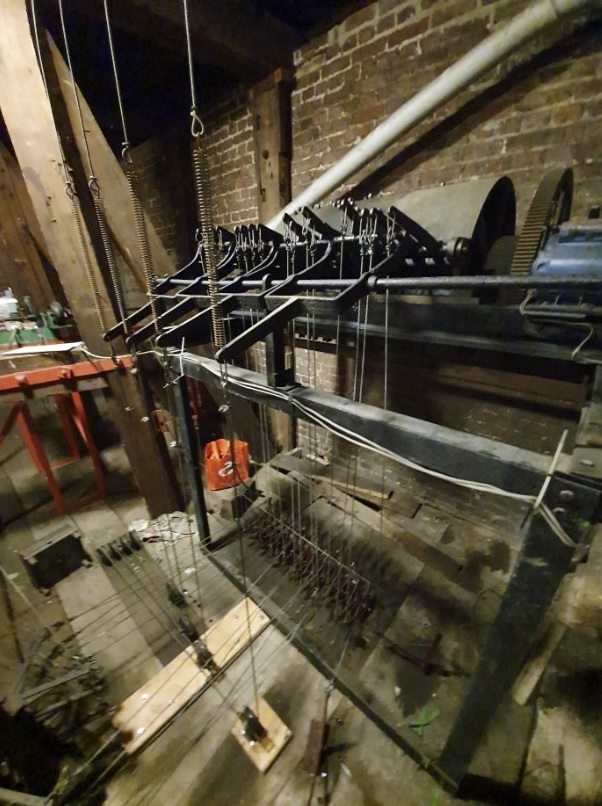
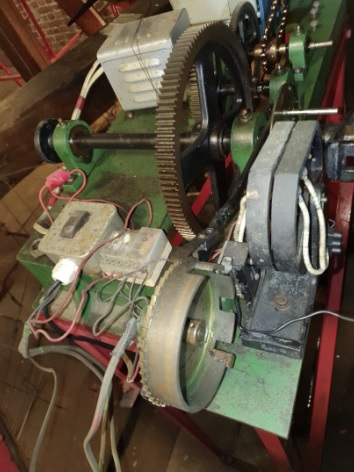
Current situation
- In the bellringers’ opinion the carillon barrel and associated mechanisms have reached the end of their operating life and failure to deal with this issue in the near future could potentially lead to significant and expensive damage to the bells and fittings.
- Over the years, a number of ‘bodges’ have kept the carillon operating, but the whole mechanism is very worn and dilapidated and in need of a
complete refurbishment. - Several of the pegs are now missing or worn and other notes strike
randomly probably as the drum is misaligned with the levers. - The linking wires are stretched, bent and in some cases patched up with
other bits of wire and have broken and been repaired in the past. - The hammers and the hammer hinges are also worn and in some cases rest against a bell when they should be clear of the bell.
- The linkage levers and pulleys are attached to the floor of the clock
chamber and the floor is very rickety. Levers/pulleys occasionally pull out of the floor and have to be resecured with larger bolts but it’s all very unsatisfactory. - The wires run along the floors and are a trip hazard for someone not used to moving around in the clock room.
- The tunes sound very jumbled and it is difficult to pick out original tunes.
- The pull off mechanism also needs complete refurbishment.
- There is a danger that a wire could break/fail and a hammer fall back on a bell whilst being rung full circle and this could cause a lot of damage including potentially cracking a bell which would be disastrous.
- The clock operates well and the hour strike is unaffected. The clock is
maintained by Public Clocks and financed by the Council. - However, it would be a good opportunity to refurbish the hour strike
mechanism and also the ‘dinger’ used before the services as this is also on its last legs. This has also been patched up over the years. - There is a lot of junk in the clock chamber and it would be good to have a clear out.
- The carillon has been disabled pending a decision on its’ future but the hour strike and ‘dinger’ still operate.
Work carried out
The carillon has been replaced with a modern electronic
version. The mechanism from the old carillon is being retained in case there is the finance and will power to restore it in the future.
The new carillon will play the same tunes, strike the hour and have a minute bell facility.
The bell fittings will have a full service including the following:
– New wheel for the 10th bell (the existing wheel was warped) – it goes very smoothly now!
– New walkway on the frame for safer access
– Lubrication of all moving parts
– Tighten all bolts to required tension
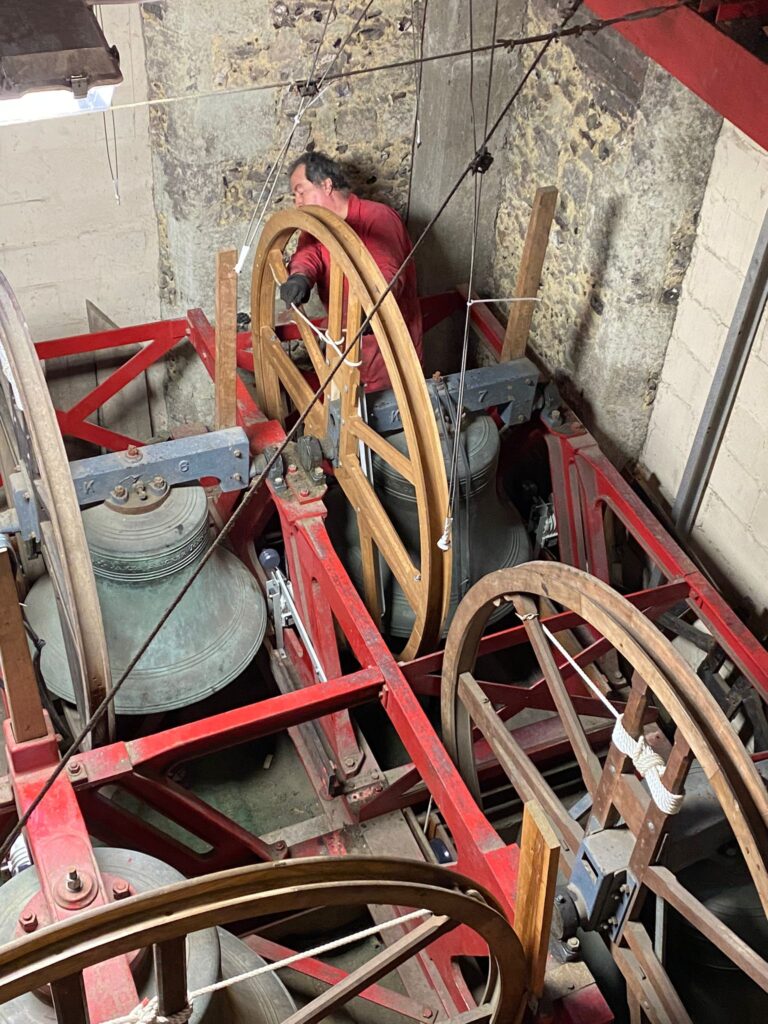
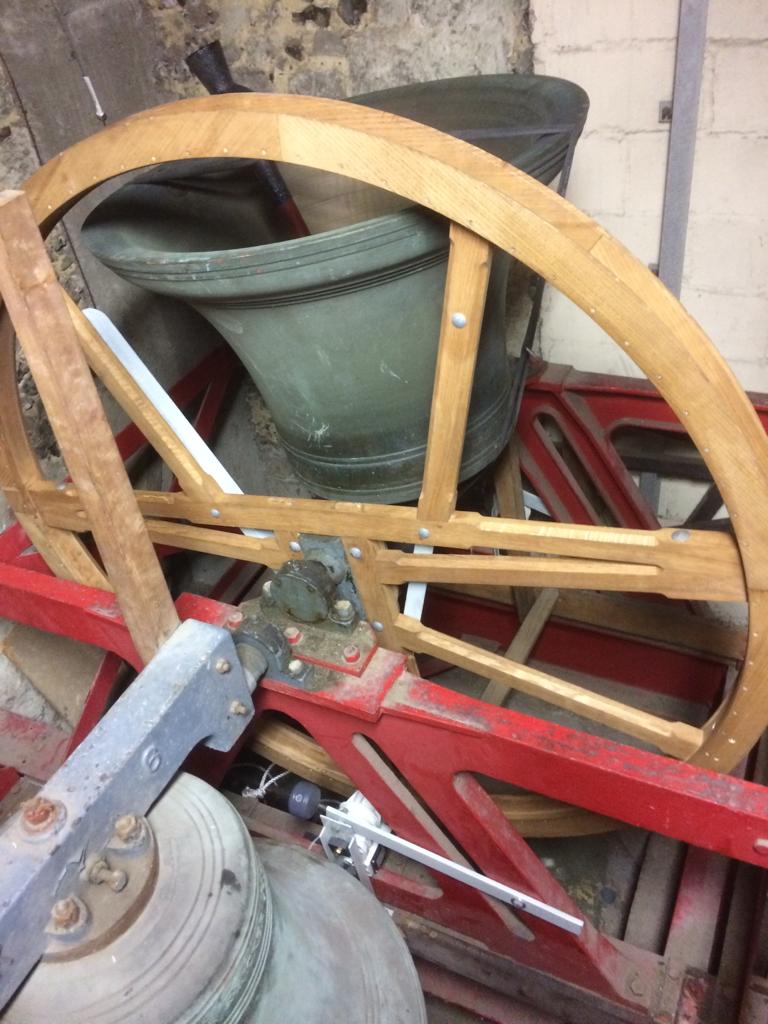
Hymns
Christmas to Lent Tune 1 25 December to 17 February
(O worship the King)
During Lent Tune 3 17 February to 4 April
(Christ is gone up)
Easter Sunday to Whitsunday Tune 4 4 April to 23 May
(Christ the Lord is risen)
Whitsunday to Mid-September Tune 3 23 May to 15 September
(Christ is gone up)
Mid-September to Christmas Tune 2 15 September to 25 December
(God moves in a mysterious way)